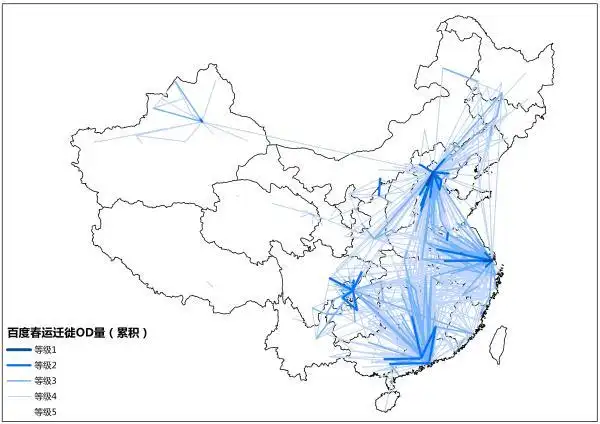Chunyun: The World's Largest Annual Migration Yet A Journey Home
China Must-KnowImagine a movement of people so vast that it dwarfs any other annual human migration on Earth. This isn't a pilgrimage or a mass exodus, but a joyous return home – the Spring Festival migration in China, also known as "Chunyun" (春运).
What is the Spring Festival?
The Spring Festival, or Chinese New Year, is the most important traditional Chinese holiday, usually in early February (it's in late January 2025, though). It's the start of a new year on the traditional lunisolar calendar, and it's all about families getting together, celebrating, and remembering their ancestors. Family is a huge deal in Chinese culture, so going home for Spring Festival is a top priority for many, no matter how far they have to travel.
The Spring Festival Migration (Chunyun):
"Chunyun" (春运) is the roughly 30-day period around Spring Festival. It includes about 15 days before, the 7-day holiday itself, and about 5 days after, when people go back to work or school.
Scale and Numbers:
The scale of Chunyun is hard to wrap your head around. It's not just a lot of people; it's a massive logistical operation involving pretty much every way to travel.
- Total Trips: Before COVID, Chunyun saw almost 3 billion trips every year—trains, roads, planes, boats, everything. In 2023, it was over 4.7 billion. And in 2024, it hit nearly 9 billion!
- Comparison: To give you some context, the Hajj pilgrimage to Mecca has about 2-3 million people. Thanksgiving travel in the US, which is known for bad traffic, has around 50 million. Chunyun is on a completely different level.
Migration Flow Patterns:
People don't move around evenly during Chunyun. They mostly go from big economic centers (like the biggest cities) to smaller cities and rural areas nearby. This is mostly because people who've left their hometowns for work in the big cities are going back home.
- Beijing: As the capital and a major center for everything, Beijing sees a huge outflow of people, mostly heading to northern provinces like Hebei, Shandong, and Northeast China (Liaoning, Jilin, Heilongjiang).
- Shanghai: Shanghai is the big economic center in the Yangtze River Delta, so lots of people go back to provinces along the Yangtze, like Jiangsu, Zhejiang, Anhui, and Jiangxi.
- Shenzhen/Guangzhou (Pearl River Delta): These cities see lots of people traveling to inland provinces in Southwest and Central South China, like Guangxi, Hunan, and Sichuan.
- Western Regions: Places like Xinjiang, Tibet (Xizang), and Qinghai are less crowded and don't have as many people leaving for work, so the travel isn't as intense. People still travel within these areas, but it's on a smaller scale.
You can see these travel patterns in real-time on online platforms like the "Migration Map" (百度迁徙地图).

Why Does This Happen?
So, why does this happen? A few things:
- Family is Everything: The biggest reason is family. Chinese New Year is the time to be with family, and people will go to huge lengths to make it happen.
- It's About the Money: A lot of people leave their hometowns to find better jobs in the big cities. So, CNY is their only chance to go back. It's not just "migrant workers"—it's about how the economy's set up, with most of the good jobs in places like Beijing and Shanghai.
- Better Infrastructure Makes It Possible: Even though it's crazy busy, things like extensive high-speed rail and highway network make it way easier to travel, which makes this massive migration possible.
Traveling in China During Chunyun: Tips for Tourists
Traveling during Chunyun is tough. Expect crowds, sold-out tickets, and higher prices.
-
Timing is Key: Check the exact dates for the year you're traveling.
-
What to Expect:
- Crowds Everywhere: Trains, planes, buses—you name it.
- Tickets Are Scarce: Especially on popular routes.
- Prices Go Up: For everything.
- Finding a Place to Stay is Harder
-
Pro Tip: Go Against the Flow: A smart move is to travel before the main rush. For example, if you want to visit Beijing, go before CNY when everyone's leaving. You'll have an easier time and might even find better deals. It's all about thinking ahead.
-
Other Tips:
- Avoid the Busiest Days: If you can.
- Book Way in Advance: Like, months ahead.
Chunyun, with its billions of trips, shows how important family and tradition are in Chinese culture. It's a unique thing that shows just how many people move around in the world today, and how hard it is to manage something this huge. It's truly "next-level" and hard to understand unless you see the numbers, the flow of people, and why it matters so much.